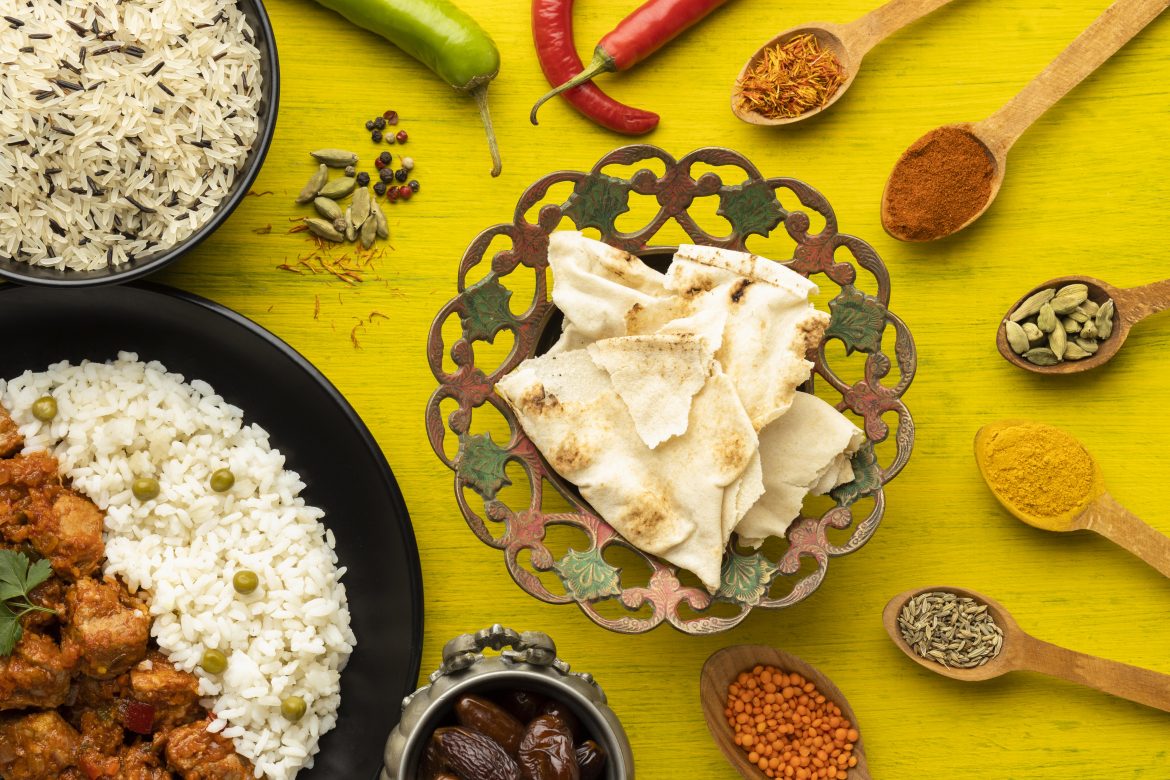
What Makes Traditional Indian Food Unique?
- July 12, 2021
- Posted by Admin
- 0 Comment(s)
It may seem that when we talk about Indian cuisine, we’re talking about the same dishes that are cooked and eaten all over India. But in fact, Indian cuisine has its varieties too, depending on the region it’s from. Although there are commonalities that distinguish dishes as characteristically Indian, spice combinations, ingredients and cooking methods may vary. But let’s start with the common features that make traditional Indian food, Indian.
Wherever you go in India, meals will always include curries. Curries are what Indian cuisine is most well-known for around the world. These delicious gravy-like sauces may consist of vegetables, meat or cheese, but will differ in every region in the particular spice mixtures used, degree of liquidity, and ingredients.
Rice is a well-used staple in Indian cuisine, though southern regions use it more heavily than others. A plentiful array of legumes can also be picked from, as these are another commonly used ingredient around India.
Finally, Indian cuisine is never complete without the blending of at least five different spices into its dishes. Some recipes will even use ten or more spices to achieve that sought-after taste complexity and fullness. Garam masala, a mix of various spices, is commonly used in many dishes for a ready-made and convenient spice blend that packs extra flavour quickly. Mint, fenugreek and coriander leaves add an herby taste to the dishes, and are well-used for bringing out freshness to the food.
With that said, here now are the differences in Indian dishes according to region:
Northern Indian Cuisine:
This cuisine is characterized by its high use of dairy products like milk, cheese, yogurt and ghee (clarified butter), due to Moghul influence. Samosas are a popular snack from this region. Clay ovens or tandoors are also popularly used to cook meat and flatbread.
Western Indian Cuisine:
This region has varied influences, and geographical location accounts for the ingredients used. Fish and coconut milk are dominant ingredients in the coastal locations, while other parts have a mostly-vegetable cuisine due to Chinese influence. This region is also well-known for its chutneys, as its dry climate often produces smaller vegetables.
Eastern Indian Cuisine:
This region is well-known for its desserts. It also tends to favour mustard seeds and oil for a slightly more pungent taste to dishes. Eastern dishes are more lightly spiced as well, than those of other regions.
Southern Indian Cuisine:
This region perhaps has the most different cuisine out of all regions. Southern Indian cuisine is not typically found in Indian restaurant menus. Its curries can be either dry or have a more soupy consistency than those of other regions. Southern Indian cuisine is best known for its fried or griddle-cooked snacks. Crepe-like dosas are typically filled with vegetables, chutneys or curries.
Now that you know the distinct characteristics that make Indian cuisine varied in every region, you may prefer to focus on the cuisine of one region over another and learn its unique styles of cooking. This will make it easier for you to master Indian cooking techniques with the specific flavours and cooking style you desire.
For a delicious experience of the most well-loved and authentic Indian dishes, try our very own menu at Curry Corner. Visit our Indian grocery shop for all the items you need or browse through our website for our home-cooked takeaway dishes. Easily order your favourite Indian food in Melbourne CBD areas as well when you want them delivered right to your office.
Curry Corner
Shop 3/292 Victoria St., North Melbourne VIC 3051, Australia
Email: enquiries@currycornermelbourne.com.au
Phone: 0406 238 094
Landline: 03 9663 4040
